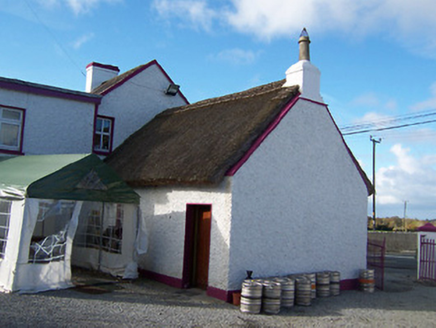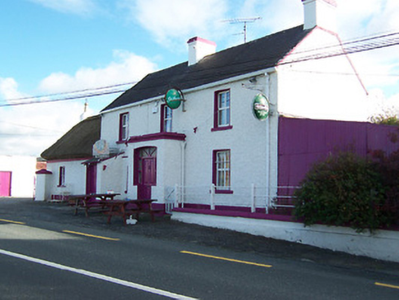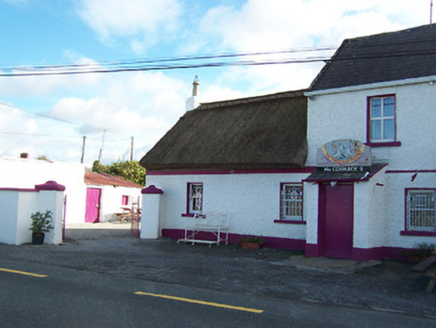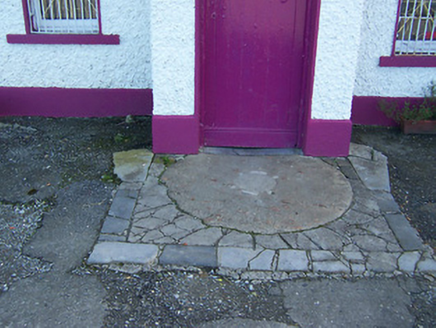Survey Data
Reg No
15401602
Rating
Regional
Categories of Special Interest
Architectural, Cultural, Social
Original Use
House
In Use As
Public house
Date
1800 - 1870
Coordinates
211781, 251517
Date Recorded
10/10/2004
Date Updated
--/--/--
Description
Detached three-bay two-storey house with single-storey flat roofed porches to centre and to the northeast end of entrance façade (west), built c.1830, with two-bay single-storey thatched section to northeast end. Modern two-storey extensions to rear (southeast) and single-storey lean-to corrugated-iron extension to south gable. Now in use as a public house. Pitched slate roof to main building with rendered chimneystacks to the centre and to the southwest gable end. Thatched roof to single-storey extension with rendered chimneystack to the northeast gable end. Roughcast rendered walls over smooth rendered plinth. Square-headed window openings with rendered reveals and (mainly) stone sills. One-over-one pane timber sliding sash windows to openings to single-storey section and between porches of two-section at ground floor level, replacement windows elsewhere. Shallow segmental-headed doorcase to porch to centre of two-storey section with timber panelled door, glazed surround having spoke fanlight over, timber battened door to northern porch with mill stone set into ground to front (west) acting as paving. Road fronted with low rendered wall with wrought-iron railings over to south end.
Appraisal
An attractive and prominently-sited mid nineteenth-century public house, which retains its early character despite the loss of important early fabric and fittings. The single-storey section to the north with the thatched roof may be the original structure but this is difficult to ascertain and, equally, this could be a twentieth century addition built for picturesque effect. This modest structure is named after the 'Three Jolly Pigeons', a public house that provided the setting for Oliver Goldsmith's renowned play 'She Stoops to Conquer', written in 1773. However, the original pub of this name was sited a short distance to the south in the townland of Clonghannagarragh and this is a later public house utilising the same name. Local traditional has it that this building was constructed using stone salvaged from the 'Busy Mill', mentioned in Goldsmith's Poem 'Sweet Auburn', when it was demolished c.1860. This suggests that the two-storey section may have been built at this time. The mill stone built into the footpath in front of the porch to the north was probably taken from the ruins of the this mill or, perhaps, from the wind mill (15401603) that is located a short distance to the north of this building.







